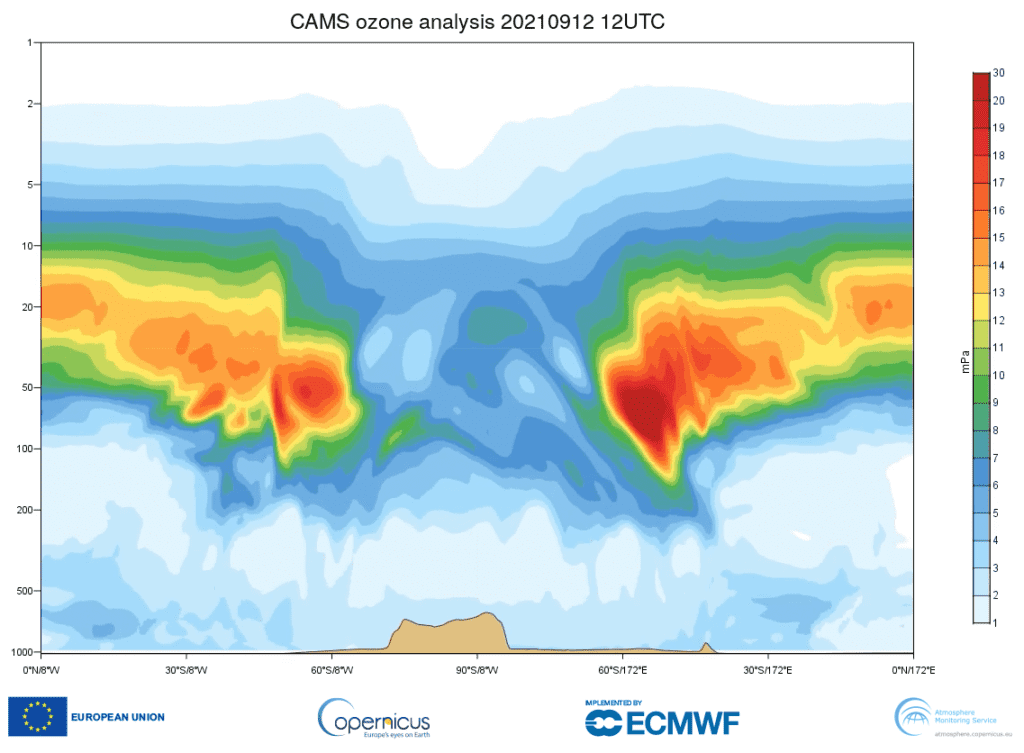As every year, we celebrate today the International Day for the Preservation of the Ozone Layer, honoring the signing of the Montreal Protocol — one of our biggest environmental successes ever. But this year, in particular, is shaping up to be a bad one as scientists are warning that the hole in the ozone layer over the Southern Hemisphere is now larger than the size of Antarctica — and it’s not entirely clear why.

The ozone depletes over the Antarctic region every year, with the hole reaching its maximum size between September and October. Following a “pretty standard” start, the hole has “considerably grown” in the last week, now larger than 75% of previous holes at this point in the season since 1979, according to recent scientific reports.
Researchers at the Copernicus Atmosphere Monitoring Service (CAMS) monitor the developments at the ozone layer through computer modelling and satellite observations, in a similar way to weather forecasts. They’re particularly looking at the total column of ozone from measurements in the ultraviolent-visible part of the solar spectrum.
“It wasn’t really exceptional in September, but then turned into one of the longest-lasting ozone holes in our data record later in the season. Now our forecasts show that this year´s hole has evolved into a rather larger than usual one,” Vincent-Henri Peuch, head of CAMS, said in a statement. “We are looking at a quite big and potentially also deep ozone hole.”
Last year, the ozone hole reached a peak of 24 million square kilometers in early October, which has a big larger than the previous year. This year, the hole began developing in a way that suggested it would be about the same size. But it turns out this wasn’t the case. Researchers at CAMS are now trying to figure out why this is the case.
Speaking with The Guardian, Peuch said this year’s hole is among the 25% largest in CAMS’ records but that this could change as the process is still under way. A big or small hole in one specific year doesn’t necessarily mean that the overall recovery process of the ozone layer isn’t going as expected, but it will have to be further studied, he added.
The ozone layer
Ozone exists about 11 to 40 kilometers (seven to 25 miles) above the Earth’s surface, in the stratosphere. It’s a gaseous shield that acts like “sunscreen for the planet”, absorbing harmful ultraviolet radiation from the sun that could cause eye damage, immune suppression, and skin cancer and also damage plants and marine life.

Back in the 1970s, scientists discovered that the ozone layer thinning was being worsened by human use of halocarbons, chemical substances present in products like fridges, packaging, and aerosols. This triggered a global agreement, called the Montreal Protocol, to ban those chemicals. It was signed by virtually every country in 1987.
According to the most recent assessment, ozone has recovered at a rate of 1-3% since 2000 in parts of the stratosphere. With the projected rates, the Northern Hemisphere and the mid-latitude ozone would fully recover by the 2030s. This is expected to be followed by the Southern Hemisphere in the 2050s and the polar regions by 2060s.


